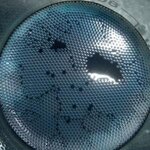Chemistry

There's science in love, you know, and that means there's science in Valentine's Day. Science on Valentine's Day is like cold fusion instead of ethanol. Completely wonderful. And we have it all right here.
Not sure who to date? Garth Sundem answers it in The Valentine's Day Man-O-Meter. Be sure to take it as gospel because he never just makes stuff up.There's science in love, you know, and that means there's science in Valentine's Day. Science on Valentine's Day is like cold fusion instead of ethanol. Completely wonderful. And we have it all right here.
Not sure who to date? Garth Sundem…

In work that could dramatically boost the capabilities of "lab on a chip" devices, MIT researchers have created a way to use tiny bubbles to mimic the capabilities of a computer.
The team, based at MIT's Center for Bits and Atoms, reports that the bubbles in their microfluidic device can carry on-chip process control information, just like the electronic circuits of a traditional microprocessor, while also performing chemical reactions. The work will appear in the Feb. 9 issue of Science.
MIT researchers have developed a computer chip that runs on microbubbles like these. (Photo courtesy of…

Scientists at the Scripps Research Institute and the University of Wisconsin have identified two small molecules with promising activity against neurotoxins produced by the Clostridium botulinum, a compound so deadly it has been labeled one of the six highest-risk bioterrorism agents by the Centers for Disease Control and Prevention.
Because of the high cost and limited applicability of currently available treatments, the newly identified compounds have the potential to fill the existing therapy gap and to provide protection against a bioterrorism attack using the toxin.
The study is being…

For Duke University theoretical chemist David Beratan, the results of his 15 years of studying how electrons make their way through some important protein molecules can be summed up with an analogy: how do big city dwellers get from here to there?
It's often swiftest to take the subway, Beratan notes, but riders may sometimes elect to alter their route by exiting the train for a short cab ride or a walk down the street. And they also may have to work around a route that is temporarily out of service.
David Beratan poses with subway route map. (Photo Credit: Megan Morr)
In the Friday, Feb. 2…

A team of UCLA and California Institute of Technology chemists reports in the Jan. 25 issue of the journal Nature the successful demonstration of a large-scale, "ultra-dense" memory device that stores information using reconfigurable molecular switches. This research represents an important step toward the creation of molecular computers that are much smaller and could be more powerful than today's silicon-based computers.
The 160-kilobit memory device uses interlocked molecules manufactured in the UCLA laboratory of J. Fraser Stoddart, director of the California NanoSystems Institute (CNSI…

How can defense or intelligence agencies safeguard the security of top-secret data protected by a computation device the size of a single molecule?
With cryptography approaching that sobering new era, scientists in Israel are reporting development of what they term the first molecular system capable of processing password entries. Abraham Shanzer and colleagues describe their "molecular keypad lock" in the Jan. 17 issue of the weekly Journal of the American Chemical Society.
Electronic keypad locks long have been fixtures on home security systems and other devices that require a password. The…